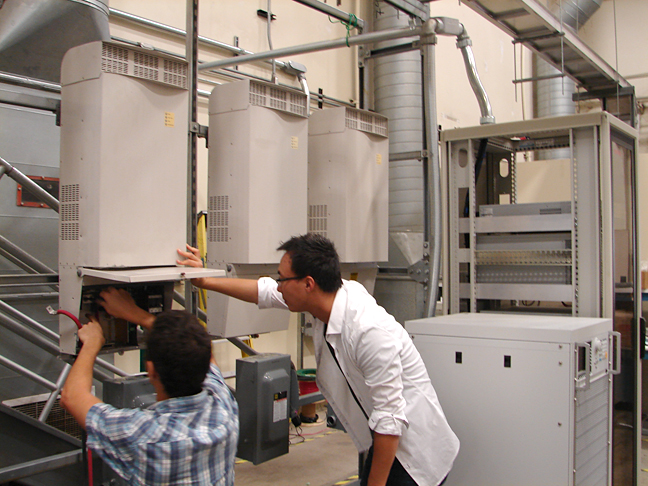Connectivity Lab Allows for Experimentation of Real World Distributed Power Generation
The Connectivity Lab at the NFCRC is a platform that allows for experimentation of real world distributed power generation. Much of the research currently conducted in the world is based in simulation and theory – the Connectivity Lab gives us the ability to bring these studies out of the computer and into the real world. The lab is designed to be modular and easily upgradable. It is anticipated that as the lab grows, additional devices will be added to augment the capabilities of the lab. Such devices may include fuel cells, battery storage, DG turbine generators, and automated demand response devices.
Equipment currently consists of three identical nodes, each containing a 3.6kVA load, 5kW DG Simulator, and an inverter, to represent a typical residential installation. One 12kVA AC source acts as a grid simulator. All devices are fully programmable and computer controlled, allowing for the simulation of transients, power distortions, and faults. For example, we could simulate a brown-out, low voltage ride through, half cycle dropout, and harmonic distortion – conditions that would be inconvenient or impossible to simulate in the real world. Field data can be imported from devices such solar panels, fuel cells, and smart meters and replayed as well.
The connectivity lab serves the purpose of answering questions regarding the real-world performance of smart grid technologies, and by answering these questions, facilitates the fast track implementation of renewable resources and smart grid technologies.
 May 20, 2013
May 20, 2013